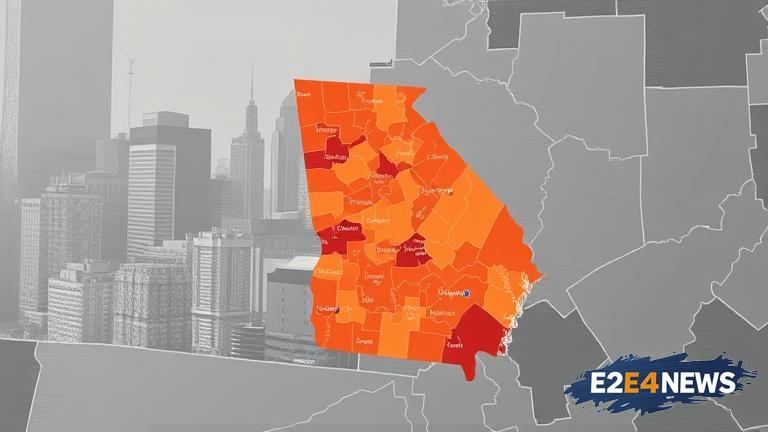Georgia has been actively working to reduce poverty, and the efforts have paid off, with the country experiencing a significant decline in poverty rates over the years. However, the benefits of this progress are not being felt equally across different cities and regions. Some areas are experiencing faster growth and development, while others are still struggling to catch up. The capital city of Tbilisi, for example, has seen a significant increase in economic activity and investment, leading to a decrease in poverty rates. On the other hand, rural areas and smaller towns are still facing significant challenges, including limited access to education and job opportunities. The government has implemented various initiatives to address these disparities, including programs to support small and medium-sized enterprises and promote regional development. Despite these efforts, there is still a long way to go to ensure that all regions and cities are able to benefit equally from the country’s economic growth. The poverty rate in Georgia has decreased from 34.6% in 2009 to 16.3% in 2020, according to data from the World Bank. This progress is attributed to a combination of factors, including economic growth, increased access to education and healthcare, and social protection programs. However, the poverty rate remains higher in rural areas, where 23.1% of the population lives below the poverty line, compared to 12.1% in urban areas. The government has recognized the need to address these regional disparities and has launched initiatives to promote economic development and job creation in rural areas. One such initiative is the ‘Regional Development Program’, which aims to support the development of small and medium-sized enterprises in rural areas and promote tourism and agriculture. The program has already shown positive results, with a significant increase in the number of small businesses and jobs created in participating regions. Additionally, the government has implemented programs to improve access to education and healthcare in rural areas, including the construction of new schools and hospitals. These efforts are expected to have a positive impact on poverty rates in the long term. However, more needs to be done to address the underlying causes of poverty and ensure that all regions and cities are able to benefit equally from the country’s economic growth. The international community has also recognized Georgia’s progress in reducing poverty and has provided support to the country’s development efforts. The World Bank, for example, has provided financing and technical assistance to support the government’s poverty reduction initiatives. The European Union has also provided significant support to Georgia’s development efforts, including funding for programs to promote economic development and social protection. Overall, while Georgia has made significant progress in reducing poverty, there is still a long way to go to ensure that all regions and cities are able to benefit equally from the country’s economic growth. The government and international community must continue to work together to address the underlying causes of poverty and promote economic development and social protection in all regions of the country. The future of Georgia’s poverty reduction efforts will depend on the ability of the government and international community to work together to address the complex challenges facing the country. With continued support and investment, it is possible to achieve significant reductions in poverty rates and promote economic growth and development in all regions of the country. The government has also recognized the importance of promoting economic development and job creation in rural areas, and has launched initiatives to support the development of small and medium-sized enterprises and promote tourism and agriculture. These efforts are expected to have a positive impact on poverty rates in the long term. Furthermore, the government has implemented programs to improve access to education and healthcare in rural areas, including the construction of new schools and hospitals. These efforts are expected to have a positive impact on poverty rates in the long term. In addition, the government has also recognized the importance of promoting social protection and has implemented programs to support vulnerable populations, including the elderly and disabled. These efforts are expected to have a positive impact on poverty rates in the long term. Overall, Georgia’s poverty reduction efforts have shown significant progress, but there is still a long way to go to ensure that all regions and cities are able to benefit equally from the country’s economic growth.





